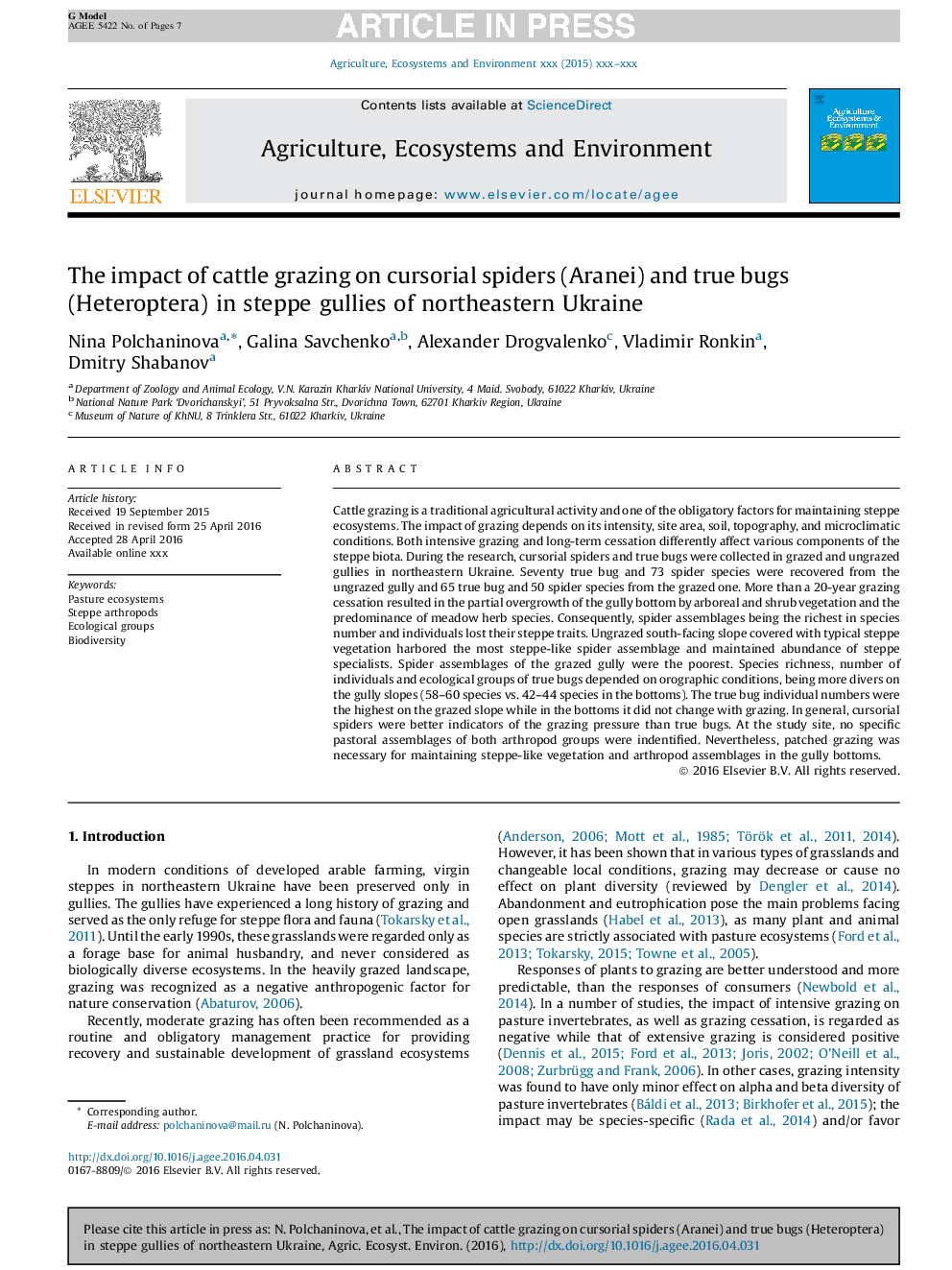| Article ID | Journal | Published Year | Pages | File Type |
|---|---|---|---|---|
| 5538124 | Agriculture, Ecosystems & Environment | 2016 | 7 Pages |
Abstract
Cattle grazing is a traditional agricultural activity and one of the obligatory factors for maintaining steppe ecosystems. The impact of grazing depends on its intensity, site area, soil, topography, and microclimatic conditions. Both intensive grazing and long-term cessation differently affect various components of the steppe biota. During the research, cursorial spiders and true bugs were collected in grazed and ungrazed gullies in northeastern Ukraine. Seventy true bug and 73 spider species were recovered from the ungrazed gully and 65 true bug and 50 spider species from the grazed one. More than a 20-year grazing cessation resulted in the partial overgrowth of the gully bottom by arboreal and shrub vegetation and the predominance of meadow herb species. Consequently, spider assemblages being the richest in species number and individuals lost their steppe traits. Ungrazed south-facing slope covered with typical steppe vegetation harbored the most steppe-like spider assemblage and maintained abundance of steppe specialists. Spider assemblages of the grazed gully were the poorest. Species richness, number of individuals and ecological groups of true bugs depended on orographic conditions, being more divers on the gully slopes (58-60 species vs. 42-44 species in the bottoms). The true bug individual numbers were the highest on the grazed slope while in the bottoms it did not change with grazing. In general, cursorial spiders were better indicators of the grazing pressure than true bugs. At the study site, no specific pastoral assemblages of both arthropod groups were indentified. Nevertheless, patched grazing was necessary for maintaining steppe-like vegetation and arthropod assemblages in the gully bottoms.
Keywords
Related Topics
Life Sciences
Agricultural and Biological Sciences
Agronomy and Crop Science
Authors
Nina Polchaninova, Galina Savchenko, Alexander Drogvalenko, Vladimir Ronkin, Dmitry Shabanov,
